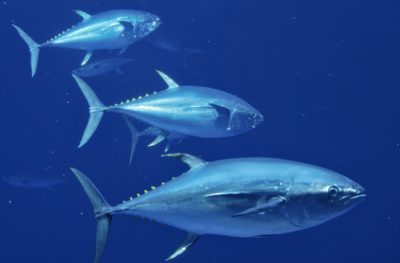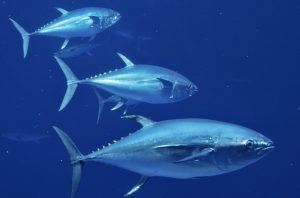
Fish Forms and Function: Body shapes
Did you know: that there are almost 16,000 species of fish in the ocean?
Did you know: that you can find fish in every part of the ocean?
From the shallows of the beach all the way down to the deepest depths, where no light shines…EVER!
The reason that fish are able to live in all areas of the ocean is because they have specially adapted body shapes that suit their surroundings. Each body shape has a very special function. Take for example the coastline where there are lots of rocks and algae growing, kind of like the coast of Catalina Island. The fish that you would see are going to be better adapted to this environment over a fish that you would see swimming in the middle of the Pacific Ocean. Every species of fish has adapted to be able to move through the water with the least amount of resistance or to be as hydrodynamic as possible.
Did you know: that water is almost 600 times more dense than air?
That is why it is so important for fish to be effective hydrodynamic swimmers.
 Let’s talk a little fish anatomy real quick!
Let’s talk a little fish anatomy real quick!
All fish have a couple standard attachments, kind of like a car. There are fins, gills, eyes, and a tail. Just like a car has a steering wheel, tires, headlights, and engine. A fish needs these things so that it can effectively move through the water. Some fish are more highly adapted to certain areas in the water and more adapted for different skills, such as a predatory surface fish versus a deep bottom dwelling scavenger fish.
Here’s some standards parts of a fish…take a look:
Now that we know what the standard parts of the fish are let’s talk about what body shapes there are and what they are used for.
 Body shapes forms and function
Body shapes forms and function
Take a look at some of these common fish body shapes.
Generally most fish fall into similar categories, we are going to talk about 3 groups of fish… Streamline fish, Globe fish, and Flat fish.
Streamline or Fusiform:
Streamline fish spend most of their time swimming, constantly on the hunt for food. Their bodies are long and narrow; their faces typically have a point with a terminal mouth, evenly distributed fins across their bodies, and a forked tail.
The reason that these guys want to be as streamline as possible is because they are going to be the fish that hunt down and eat other fish so they will need to be able to chase down their prey. It’s kind of like a game of cat and mouse.
Here’s a cool example of one these guys:

Image: Bluefin Tuna (Thunnus orientalis)
Credit: Antediluviansalad
Go check out some other examples of Fusiform fish: Marlin, Swordfish, Mackerel, and Bass
Globiform or Globe-like:
Globiform fish look pretty much how you imagine. They are very round like a globe and typically aren’t the fastest swimming fish in the ocean. They tend to hang out around coral reefs, kelp forest, and rocky areas where they can use their environment to their advantage.
Their body shape consists of round globe like; they have short fins, and large round eyes.
Despite not being the fastest fish; some globiform fish have a specialized adaptation that allows them to take in water and increase their body size up to 4 times the original size to scare off predators.
Here’s an adorable example of a Globiform fish:

Image: Valentin’s Sharpnose puffer (Canthigaster valentini)
Credit: saltwatersmart.com
Check out some other cool Globiform fish: Porcupine Puffer, Globefish, Ballonfish
Depressiform or Flatfish:
Depressiform or flatfish, kind of look like a pancake that fell on the ground. As the name describes they are very flat; they are also bottom dwelling and typically likely to burry themselves in the sand.
The shape of their body is similar to other fish but they are flat like a pancake. Flatfish spend so much time on their side that their eyes actually move to be on one side of their eyes and mouths twist so that they are able to eat little critters off the ground. Having their eyes on one side of their head the flatfish are able to stay close to the ground and keep a sharp eye out for predators.
 Take a look at this crazy flatfish:
Take a look at this crazy flatfish:
Image: California Halibut (Paralichthys californicus)
Credit: Wikipedia
Take a minute to check out these other Flatfish: Halibut, turbot, flounder
Keep posted for other posts about fish!!!

Glossary:
Hydrodynamic: refers to something being able to move through the water with the least amount of resistance
Terminal Mouth: large mouth at the end of the snout… take a look at this image to better understand.


